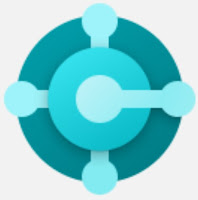 Hi all,
Hi all,In this article, we will discuss how to setup a Business Central 2020 Release Wave 1 Preview via Dockers.
If you as a partner have access to Microsoft Collaborate "Ready To Go" program then follow steps below.
If you don't know about Docker Containers you can find more information and installation instruction in this article.
If you have already installed docker, please follow the article below to setup Docker Container for Business Central 2020 Wave 1.
#IWishItWasApril
Step 1. Open Powershell ISE and Run as administrator.
Step 2. Set Execution Policy to Remote Signed.
Set-ExecutionPolicy RemoteSigned -Force
Step 3. Install Nav Container Helper.
Install-Module -Name navcontainerhelper -Force
Step 4. Login to docker to access Future Release images.
docker login "bcinsider.azurecr.io" -u "username" -p "password"
Step 5. Next is the command to create a Container for Business Central 2020 Wave 1.
** You can download Powershell cmdlet from Github.
Parameters That you can change (Bottom To Top) -
1. memory limit - Amount of Memory that you want to assign to Container. In the above screenshot, it is set to 3 GB if you want to increase it just replace 3 with that number for 10 GB it will 10G.
2. $licenseFile - Specify the Path on your local machine where a license for Business central is placed.
3. admin - Is the user name for the container.
4. P@ssword1 - is the Password for the container.
5. $containerName - is the name of your container.
6. $imageName - is the Business Central image that you want to use to build this container.
Step 7 - Container Ready.
In a few minutes to hours based on how much you use dockers, containers should be ready.
After the command is completed system will generate a message and details as below. Once completed please save details for future use.
Step 4 - Login to Client.
As you can see its a Sandbox environment as shown below.
Step 5 - Check Installed Extensions.
Open Extension Management Page to see how many extensions are installed.
If you don't know you will see two extensions BaseApp and System Application.
The version of apps will be v. 16.0.xxxxx.0
I hope this article helps you to setup an MSDYN365BC 2020 Wave1 preview docker container.
Let me know your views on this article as a comment.
Regards,
Saurav Dhyani
www.sauravdhyani.com







docker login "bcinsider.azurecr.io" -u "username" -p "password"
ReplyDelete--> replace username and password value with account used in MS partner portal, right?